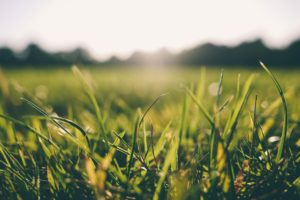 There are many species of lawn grasses out in the world. Some of the ones that don’t thrive in the Houston area are fescue and blue grass, just to name a couple. Our spring and fall humidity, our long hot summer, and our myriad of lawn pests keep most lawn types from working here. Oversimplified, we are limited to Zoysia, Bermuda, and St Augustine lawns. But within these grasses lie many subtly different variations that make the garden life better.
There are many species of lawn grasses out in the world. Some of the ones that don’t thrive in the Houston area are fescue and blue grass, just to name a couple. Our spring and fall humidity, our long hot summer, and our myriad of lawn pests keep most lawn types from working here. Oversimplified, we are limited to Zoysia, Bermuda, and St Augustine lawns. But within these grasses lie many subtly different variations that make the garden life better.
Let’s look at these three lawn options
Zoysia
– a lawn imported from China due to its tough nature and low maximum height. Can get very dense, and fluffy, depending on variety. Zorro Zoysia has won the International Lawn award a few times and is a very steady lawn. Here is a brief synopsis of the Zorro.
Ideal Mow Height – 2 inches
Max Height – 3 inches
Water Needs – Consistent irrigation required
Weed Combativeness – 35 out of 50 on the “heck no, you wont grow” scale
Winter Dormancy – 25 out of 50 on the greenness scale
Barefoot Test – only the toughest soles
Bermuda
– adapted varieties from hay grasses that can survive almost any apocalypse. Those of you that have tried to remove Bermuda grass from any setting know how difficult it is. Unlike Zoysia and St. Augustine, Bermuda spreads underground with spear like rhizomes that can travel feet and pierce the toughest of weed barriers. Celebration Bermuda when watered well and mowed to an appropriate height can be a very lush and lovely lawn. Here is a brief synopsis of the Celebration.
Ideal Mow Height – 1.75 inches
Max Height – 4.5 inches
Water Needs – Consistent but conservative irrigation required
Weed Combativeness – 35 out of 50 on the “heck no, you wont grow” scale
Winter Dormancy – 18 out of 50 on the greenness scale
Barefoot Test – Almost too comfy, watch for ant mounds.
St. Augustine
– this African savanna grass has been adapted to slow its growth and shrink its large leaf. Even after that adaptation, St. Augustine has large leaves than the other two grasses listed here and is a very robust grower. I have seen roots reach depth of 2 feet in healthy soil. Of the three St. Augustine is the least pesky next to your garden beds, but the most susceptible to some of our rascally lawn pests. Although, I have seen this issue completely mitigated with healthy lawn techniques. Palmetto and Raleigh are two varities used often in the south, with Palmetto showcasing a thinner leave and shade tolerance. If you aren’t sure your variety, you probably gave Raleigh. Here is a brief synopsis of the Raleigh.
Ideal Mow Height – 4 inches
Max Height – 22 inches
Water Needs – If healthy soil, just rain.
Weed Combativeness – 45 out of 50 on the “heck no, you wont grow” scale
Winter Dormancy –21 out of 50 on the greenness scale
Barefoot Test – Mostly nice, gets stick-like stolons, and if mowed to an ideal height, might hold surprises (dog poo).
Severe compaction has many of our lawns not living their best life. Overwatering and chemical lawn treatments are definitely ruining our lawns and lawn experience. An obsession with a weed free lawn hurts spring wildlife and doesn’t seem like a reasonable expectation.
Here are some materials that can help your lawn:
- Humic Acid/Humates
- Microlife fertilizer – 6-2-4
- Seaweed focused sprays
- Horticultural Molasses as your go to curative
- And Lastly, compost topdressing, this best practice cannot be replaced. Nothing works better to heal your soil and guide your lawn to thriving.